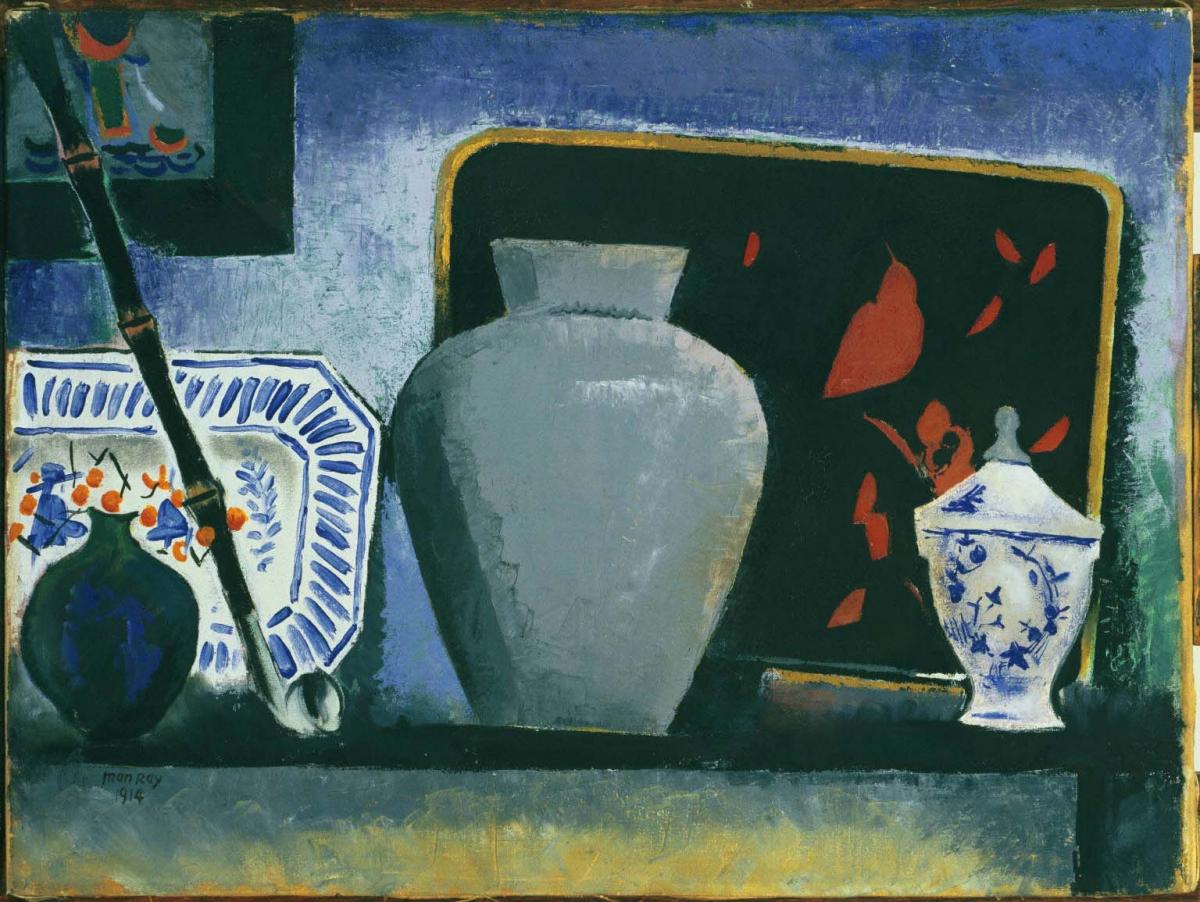The Black Tray
Man Ray ( 1914 )

Born Emmanuel Radnitsky in Philadelphia, Man Ray studied at the Ferrer Center, an anarchist-supported school in New York. He received his first exposure to modern art through exhibitions at Alfred Stieglitz’s 291 Gallery, where he felt great attraction to the European avant-garde artists. By 1914, Man Ray had begun to paint more simplified images that, over the next several years, would evolve into an abstract style. The Black Tray, which Duncan Phillips purchased in 1927, shows the beginnings of this evolution.
Here, Man Ray has completely distorted the picture plane; he has made the objects and the shelf two-dimensional, as if they are floating on the surface of the canvas. He painted with thick, flat brushstrokes, further distorting the roundness of the objects. He has placed the position of the viewer square on, painting the objects at eye level. Curator and art historian Francis Daumann wrote, “It is the sheer simplicity of its design, combined with overpowering frontality suggested by the planar elements in the background, that allows us to consider [The] Black Tray as one of the most critical steps in Man Ray’s attainment of a more abstract style.”